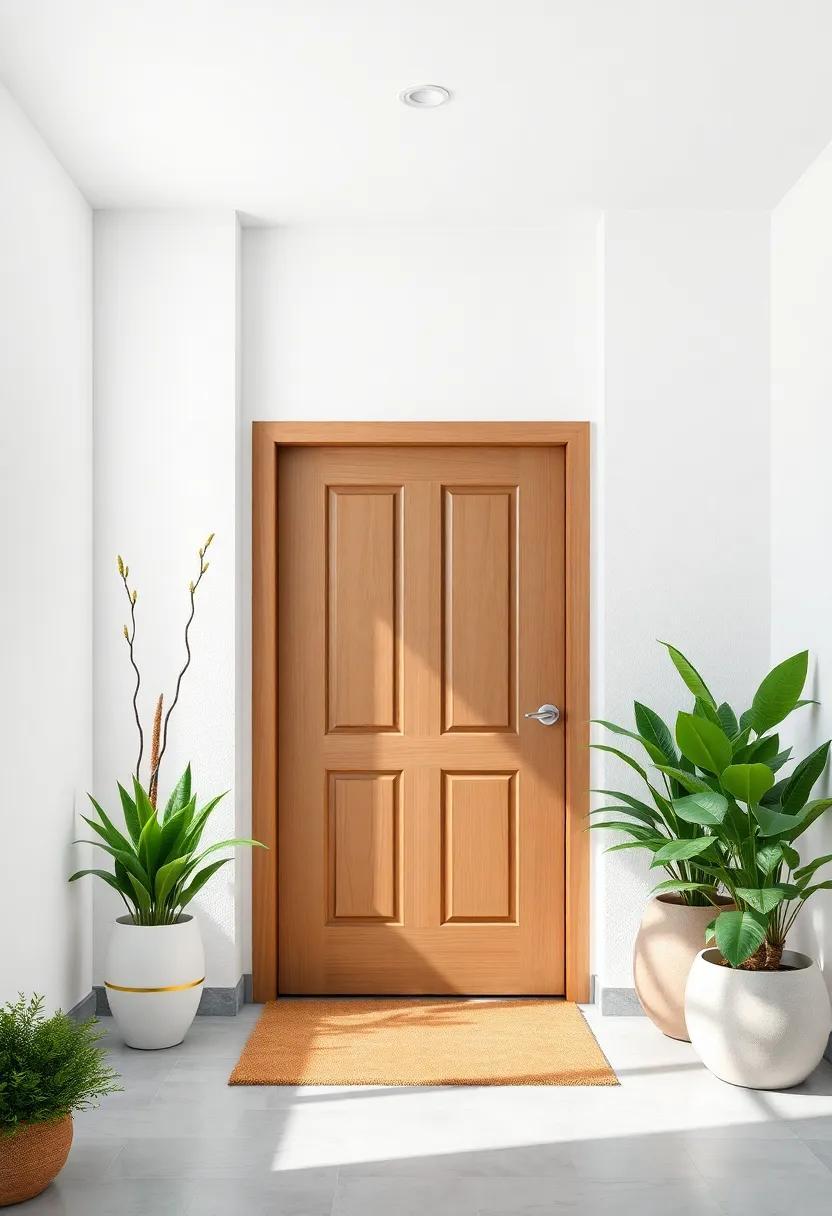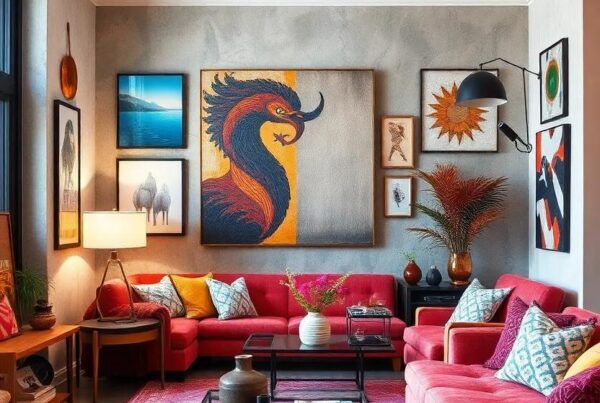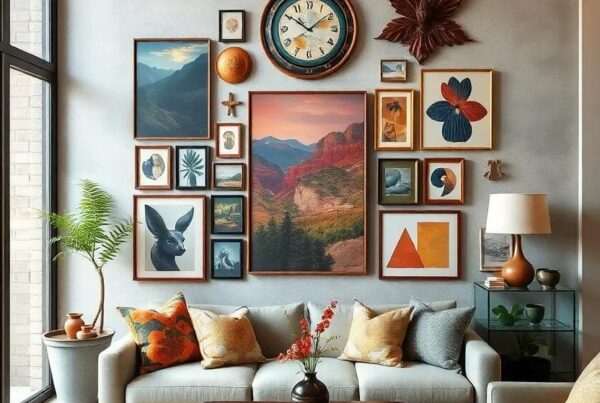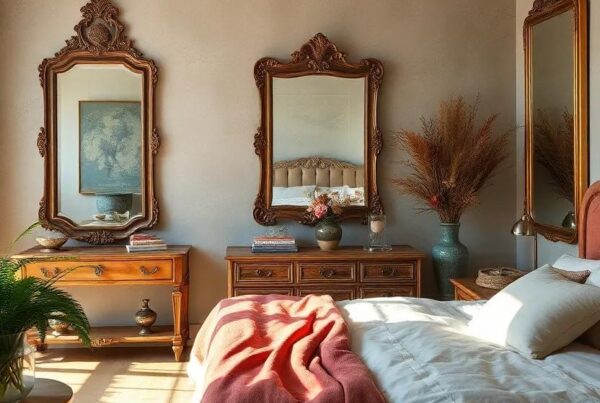In a world increasingly aware of the environmental challenges we face, our homes can serve as powerful beacons of sustainability, starting from the moment we step inside. The entryway, often the first impression of our living spaces, offers a unique opportunity to blend style with eco-consciousness. “” explores innovative approaches to designing an entrance that reflects both aesthetic values and a commitment to the planet. From using reclaimed materials and energy-efficient lighting to incorporating vibrant greenery and tactile textures, this article will guide you through creative ideas that not only enhance your welcoming space but also promote a healthier environment. Join us on a journey to redefine first impressions while embracing the principles of sustainability, ensuring that every entryway is a step towards a greener future.
Creating a Warm Green Welcome with Lush Indoor Plants and Natural Light

Bringing nature indoors transforms your entryway into a welcoming oasis that offers both beauty and a breath of fresh air. Lush indoor plants act not only as stunning décor elements but also purify the air, creating a healthier environment right from the moment you step in. Choose plants with varying heights and textures to create visual interest and a sense of depth. Consider incorporating:
- Peace Lilies - Known for their ability to thrive in low light.
- snake Plants – Resilient and stylish, they require minimal care.
- Pothos – Their trailing vines can nicely accent wall features.
- Ferns – Offer a delicate touch and flourish in humid spaces.
Another key element in achieving a warm and inviting atmosphere is the use of natural light. Maximizing daylight can dramatically alter the mood of your entryway, making it feel more spacious and vibrant. Consider using decorative mirrors strategically to reflect light and enhance brightness throughout the space. Combine this with fixtures that mimic soft,warm sunlight,such as:
- LED sconces – These can be placed near plants to highlight them.
- Solar-powered lights – for added eco-friendliness when appropriate.
- Skylights – Perfect for adding an overhead source of natural illumination.
| Plant Name | Care Requirements | Light Preferences |
|---|---|---|
| Peace Lily | Water when soil is dry | Low to medium light |
| Snake Plant | Occasional watering | Low light |
| Pothos | Water when top inch is dry | Low to luminous indirect light |
| Fern | Keep soil moist | Indirect light |
embracing Recycled Materials in Entryway Furniture for a Sustainable Touch

Incorporating recycled materials into your entryway furniture not only enhances the aesthetic appeal of your home but also reflects a commitment to sustainability. By choosing pieces made from reclaimed wood, repurposed metals, or recycled plastics, you can create a unique and inviting atmosphere that tells a story.Here are some innovative ideas to consider:
- Reclaimed Wood Benches: A rustic bench crafted from old barn wood serves as a perfect spot to put on or take off shoes while adding character to your entryway.
- Metal Accent Hangers: Utilize vintage metal scraps to form stylish wall hooks that maintain functionality and encourage eco-amiable practices.
- Upcycled Table Designs: Transform old furniture into chic entryway tables, blending history with modern design.
When selecting recycled materials, consider the durability and sustainability of the sources. Here’s a quick comparison to help guide your choices:
| Material Type | Environmental Impact | Durability |
|---|---|---|
| Reclaimed Wood | Reduces deforestation | Highly durable |
| Recycled Metal | Less energy to produce | Extremely strong |
| Recycled Plastic | Helps reduce waste | Weather-resistant |
Incorporating Vertical gardens to Transform Your Entry Space into a Living oasis
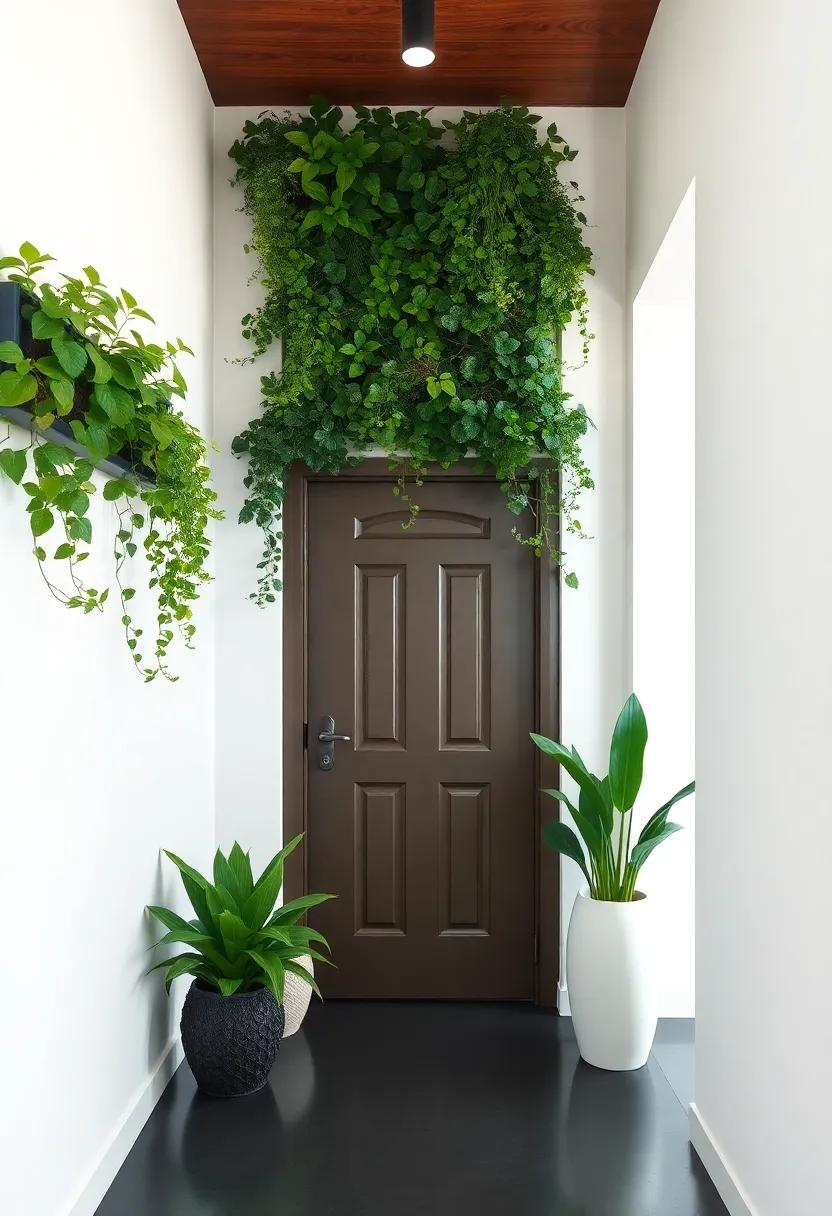
Vertical gardens are a stunning way to breathe life into your entry space, transforming it into a vibrant oasis that welcomes both guests and family alike.By utilizing wall-mounted planters, you can create a lush backdrop that not only enhances the aesthetic appeal but also offers environmental benefits. Consider incorporating a diverse palette of plants that vary in size, texture, and color, ensuring year-round interest. Some excellent options to consider include:
- Ferns: Perfect for shadier areas, adding a lush, green touch.
- Succulents: Ideal for low-maintenance setups; their various shapes and colors bring uniqueness.
- Herbs: Functional and fragrant, they provide a fresh culinary option right at your doorstep.
- Flowering plants: Brighten the area with seasonal blooms, providing a pop of color.
To maximize the potential of a vertical garden, it’s essential to choose the right support structure and irrigation method. Wall-mounted grids or trellises serve both as aesthetic elements and support systems for climbing plants, allowing you to create impressive patterns. Furthermore, incorporating a drip irrigation system can streamline the care of your plants, keeping them hydrated while conserving water. If you’re looking for an organized and visually appealing setup, consider using a simple table to plan your layout:
| Plant Type | Light Requirement | Maintenance Level |
|---|---|---|
| Ferns | Low light | Low |
| Succulents | Full sun | Very low |
| Herbs | Moderate light | Medium |
| Flowering plants | Varies | Medium |
Innovative Use of Upcycled Decor to add Character to Your Entryway

Transforming your entryway into a space that reflects your values and creativity can be effortlessly achieved with upcycled decor. By incorporating items that have been repurposed, you can add unique character while contributing to a more sustainable lifestyle. Consider using old wooden crates as rustic shelves, which can be painted in vibrant colors or left in their natural state for a more organic feel. Vintage suitcases can serve as charming side tables or be stacked to create a quirky display for house plants. Additionally, mason jars can be turned into decorative storage for umbrellas, keys, or even as candle holders, giving your entryway both functionality and flair.
To further enhance the aesthetic,think about introducing upcycled art that tells a story. A collage made from old door knobs and drawer handles can be an eye-catching wall hanging, while an old window frame can become a stylish memo board to keep your family organized. You can also create a visually appealing gallery wall by framing vintage postcards or maps, rather of opting for conventional printed art. This not only draws the eye but also sparks conversation and allows you to share cherished memories or places you’ve traveled.The key is to combine various textures and colors for an inviting space that welcomes guests with an authentic touch.
Eco-Friendly Flooring Options to set the Stage for Sustainable Living
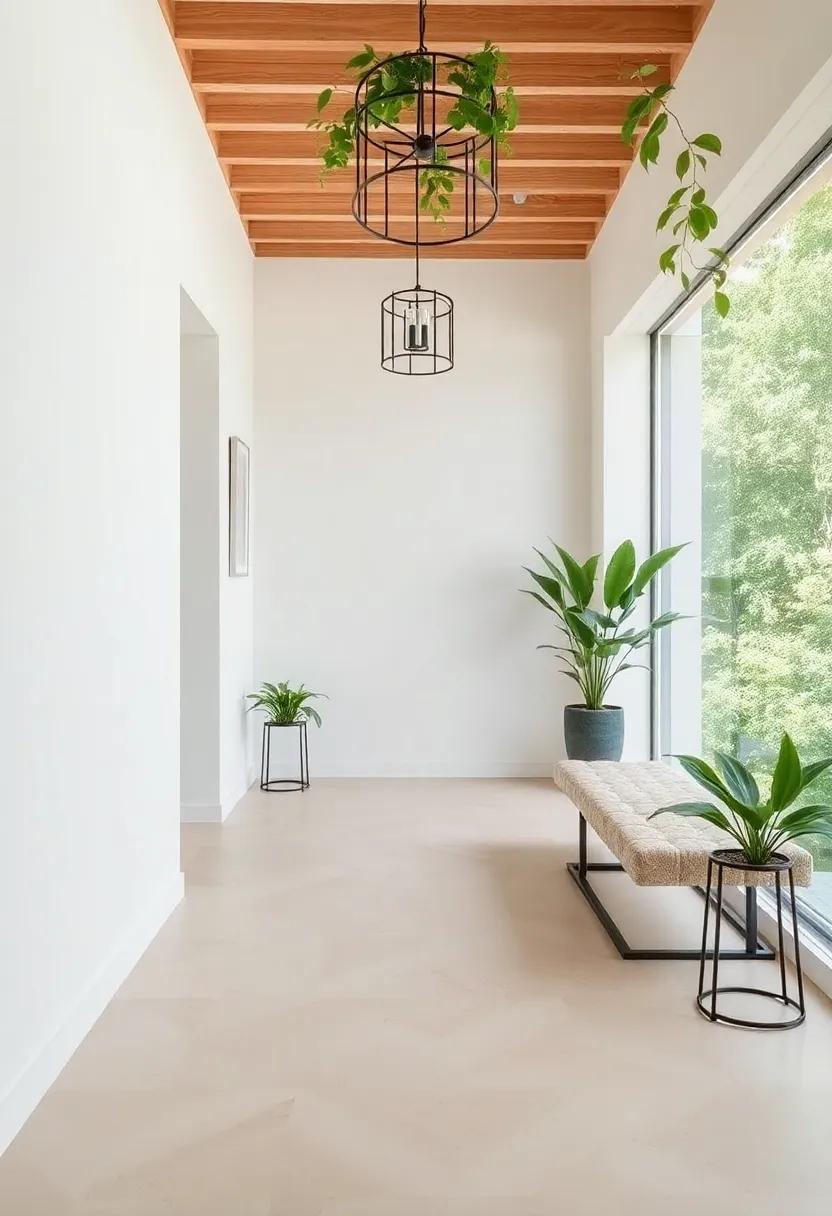
Choosing the right flooring for your entryway is a pivotal step towards creating a sustainable and welcoming home. Bamboo flooring is one of the most eco-friendly options available, as it is indeed a rapidly renewable resource that grows much faster than traditional hardwood. Not only does it have a unique aesthetic appeal with its natural grain patterns, but it also offers durability that can withstand high foot traffic.Another excellent choice is cork flooring, which is harvested from the bark of cork oak trees without harming the tree itself, making it a truly renewable material. Its natural insulation properties help keep your entryway warm in the winter and cool in the summer, adding an extra layer of comfort to your sustainable living space.
For a more luxurious touch, consider reclaimed wood. This option not only reduces the demand for new lumber but also brings unique character and history to your entryway with its distinctive textures and colors.When selecting flooring,you should also consider environmentally safe finishing solutions to protect the floor while minimizing VOC emissions. Here’s a summary of popular eco-friendly flooring options:
| flooring Type | Renewability | Durability | Eco-Impact |
|---|---|---|---|
| Bamboo | Fast-growing | High | Minimal |
| Cork | Renewable | Medium | low |
| Reclaimed Wood | Variable | High | Minimal |
Aesthetic Appeal of Natural stone and Wood in Entryway Designs

The use of natural stone and wood in entryway designs creates a warm and inviting atmosphere, setting the tone for the rest of the home. Natural stone offers a rugged elegance that adds grounding and texture,while wood introduces warmth and a sense of organic beauty. Together, these materials create a harmonious balance that captivates visitors the moment they step inside.Consider integrating slate tiles or river stones for the flooring, paired with a solid oak or cedar bench to provide both functionality and aesthetic appeal. these elements can be enhanced with the inclusion of carefully selected planters or decorative stones that complement the natural palette.
Furthermore, the versatility of wood allows for creative expressions in cabinetry and shelving, providing both storage and style. Think about using reclaimed wood for a rustic touch, or finely grained hardwoods for a more modern flair.To elevate the aesthetic experience, employ varying textures, such as a rough-hewn ceiling beam juxtaposed against smooth stone-clad walls. This contrast not only draws the eye but also speaks to the sustainability that modern homeowners crave.Below is a brief comparison of materials to consider in your entryway design:
| Material | Aesthetic Quality | Sustainability Level |
|---|---|---|
| Natural Stone | Timeless elegance | High |
| Reclaimed Wood | Unique character | very high |
| Cork Flooring | Modern warmth | High |
| Brick accents | Rustic charm | Moderate |
Enhancing Curb Appeal with Native Plants and Sustainable Landscaping

Transforming your entryway into an inviting and sustainable retreat begins with the strategic selection of native plants. these flora not only thrive in local climates but also support regional wildlife, creating a dynamic ecosystem right at your doorstep. Consider incorporating low-maintenance perennials, such as coneflowers or black-eyed Susans, alongside hardy shrubs like dogwood or serviceberry.These plants can thrive without extensive irrigation and provide seasonal color and texture to your landscape. A thoughtfully curated selection can also offer various heights and bloom times, ensuring your entrance remains vibrant throughout the year.
Additionally, sustainable landscaping techniques can further enhance the natural beauty of your property while minimizing environmental impact. Implementing permeable paving for walkways can help reduce stormwater runoff, promoting groundwater recharge.Moreover, using recycled materials such as reclaimed bricks for borders or natural stone for seating areas can add unique character while being kind to the planet. to complement your plant choices, integrating a small rain garden not only captures excess rainfall but also provides a habitat for beneficial insects and pollinators, thereby enriching your entryway’s biodiversity.
Thoughtful Lighting Solutions Using solar Tech for an eco-Conscious Entryway
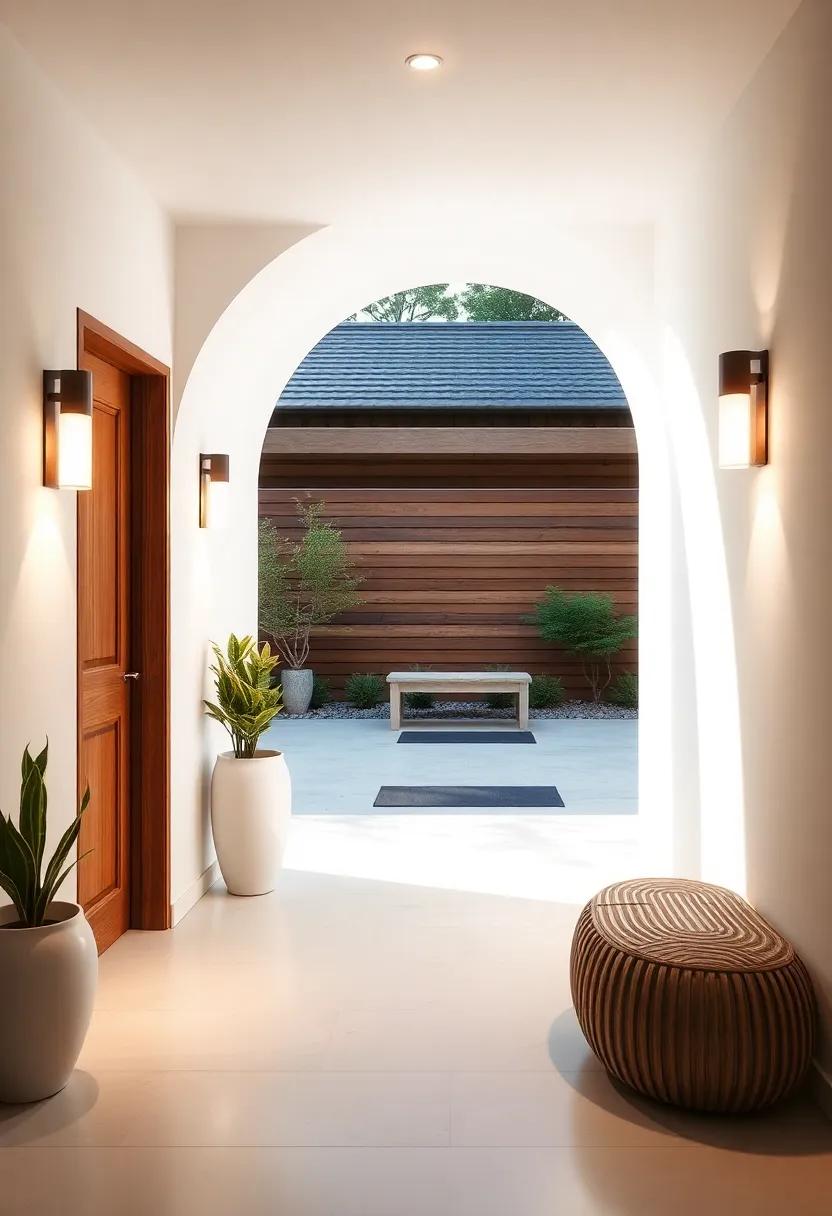
Embracing solar technology in your entryway can transform an ordinary experience into an remarkable one while contributing to a greener planet.Solar-powered pathway lights are a fantastic choice for illuminating your walkway; they not only guide your guests safely to your door but also add a twinkling charm as dusk settles. consider using solar lanterns hung from hooks or placed on tables to create a warm ambiance that welcomes everyone.Incorporating solar spotlights to highlight your favorite plants or architectural features can further enhance the visual appeal of your entrance, ensuring it stands out without consuming energy from the grid.
When selecting solar lighting options, focus on durability and design to complement your entryway’s aesthetics. Look for products that offer features such as motion sensors for security and convenience. Here are some considerations to keep in mind:
- Material: Choose weather-resistant materials to ensure longevity.
- Brightness: Select lighting with adjustable brightness settings to suit various occasions.
- Design: Opt for styles that harmonize with your exterior décor.
| Type of Lighting | Benefits |
|---|---|
| Solar Pathway Lights | Safe navigation, easy installation |
| Solar Lanterns | warm ambiance, decorative appeal |
| Solar Spotlights | Highlight features, energy-efficient |
Cozy textiles: Choosing Organic Fabrics for Your Entryway Rug and Cushions
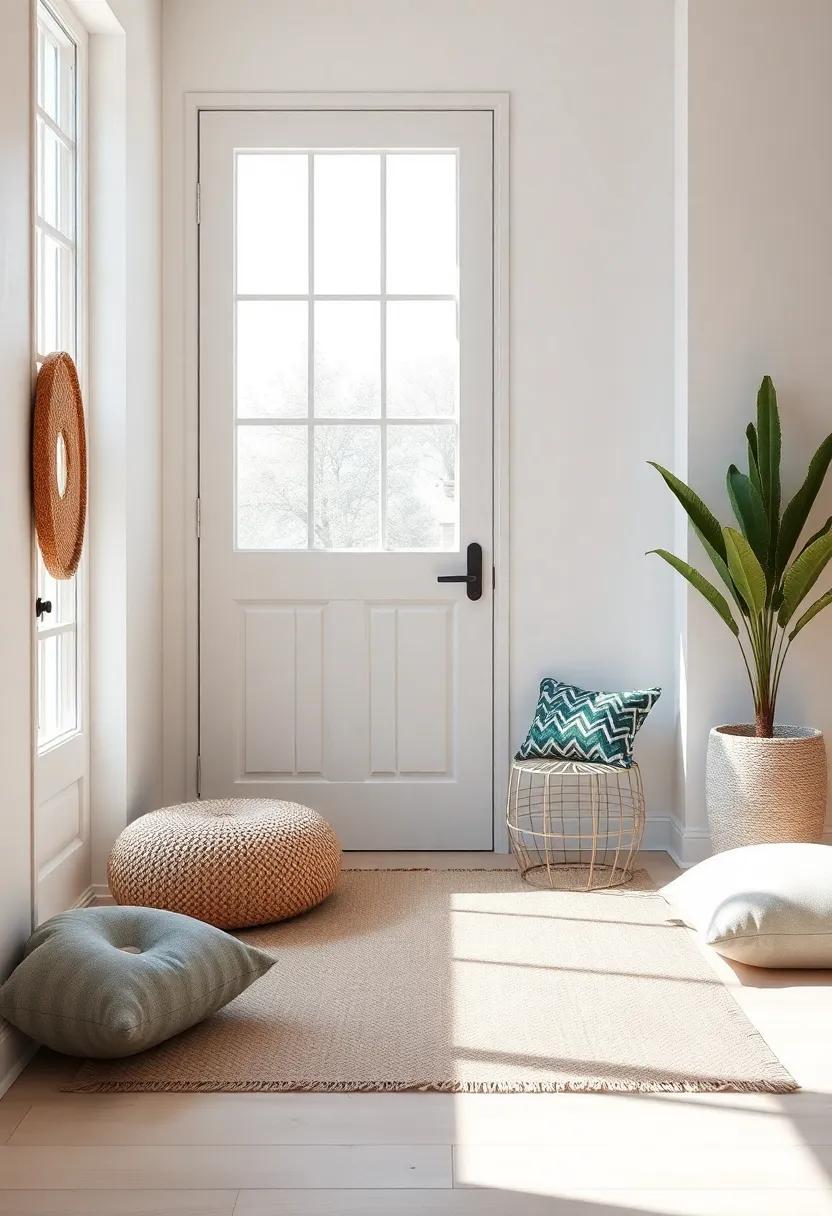
When curating the perfect entryway, the choice of textiles plays a pivotal role in setting the mood while ensuring sustainability. Organic fabrics for your rug and cushions not only contribute to a cozy atmosphere but also support a healthier environment. Look for materials such as organic cotton,hemp,and jute,which are grown without harmful chemicals and dyes. These textiles come in a range of textures and colors, making it easy to match your existing decor. Consider incorporating varied patterns to add depth to your entryway; however, keep in mind the overall balance to maintain a serene environment.
Opting for well-crafted organic textiles also means supporting ethical production practices. Choose products that are certified, as this guarantees adherence to organic standards. You can explore options such as:
- Recycled wool rugs – offering warmth and durability
- Bamboo cushions – soft and incredibly sustainable
- Natural latex for cushioning – free from petrochemicals
pairing these materials with potted plants or sustainable decor can create a welcoming environment that speaks to your commitment to eco-friendliness. By selecting organic textiles, you are not only creating a comfortable entryway but also contributing positively to the ecosystem.
Integrating a compost Bin into Your Entry Design for Eco-Friendly Practices
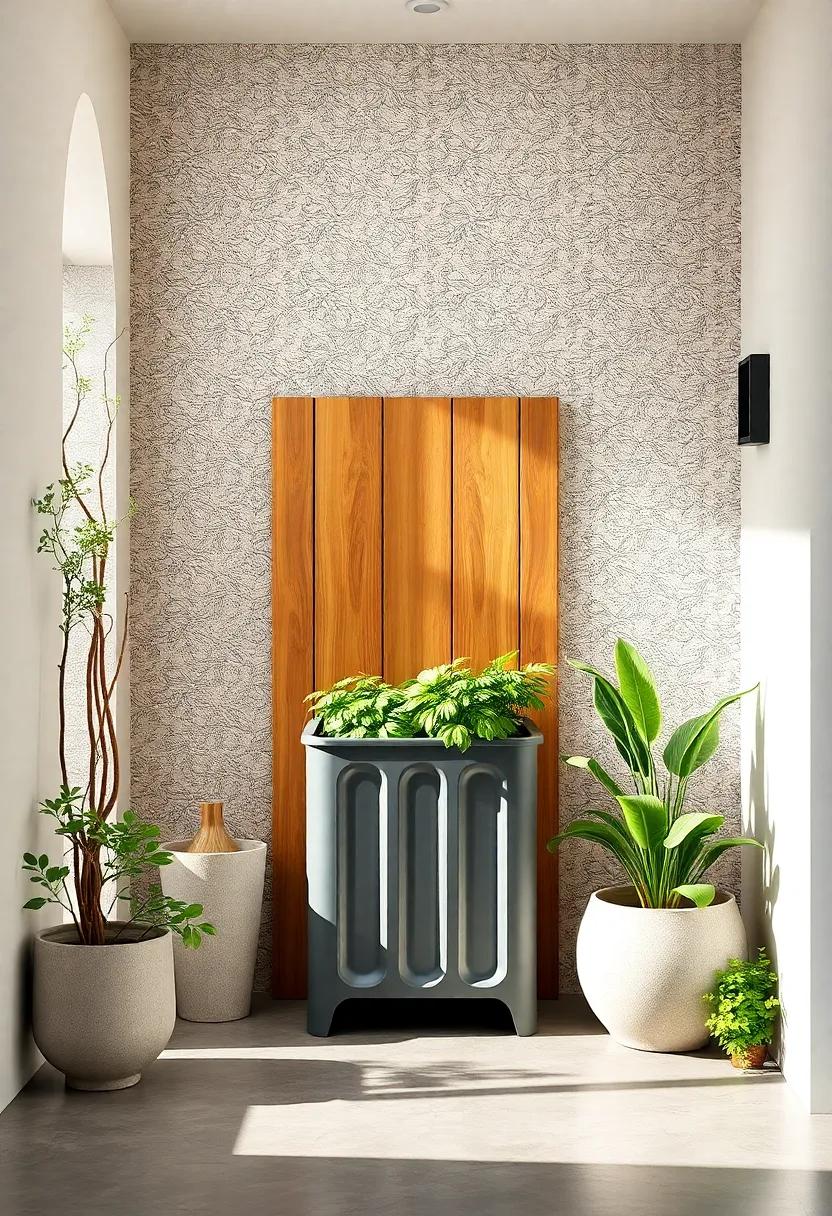
integrating a compost bin into your entry design not only enhances the aesthetic appeal of your home but also promotes sustainable living practices right from the start. Consider placing your compost bin in a strategic location near the entrance, where it can be easily accessed yet stylishly concealed. You could design a custom enclosure that complements your entryway, using materials like wood, bamboo, or even repurposed metal. This not only adds an organic touch but can also harmonize with the natural surroundings of your garden. To elevate the aesthetic,incorporate plants like herbs or flowers around the bin to create a vibrant,eco-friendly focal point.
When planning your entryway,think about various options for compost bin types that blend elegantly with your existing decor. Here are a few ideas to consider:
- Tiered Bins: Create a multi-level compost structure that serves both function and form.
- Vertical Gardens: Combine a compost bin with a vertical gardening setup to maximize space.
- Decorative Bins: Use charming, aesthetically pleasing compost containers that act as statement pieces.
This integration not only serves a practical purpose, but it also invites guests to participate in eco-friendly practices. As your compost bin becomes a part of your home’s narrative, it exemplifies a commitment to sustainability and encourages others to adopt similar habits.
Eco-Conscious Art Installations to Elevate Your Entryway’s Appeal
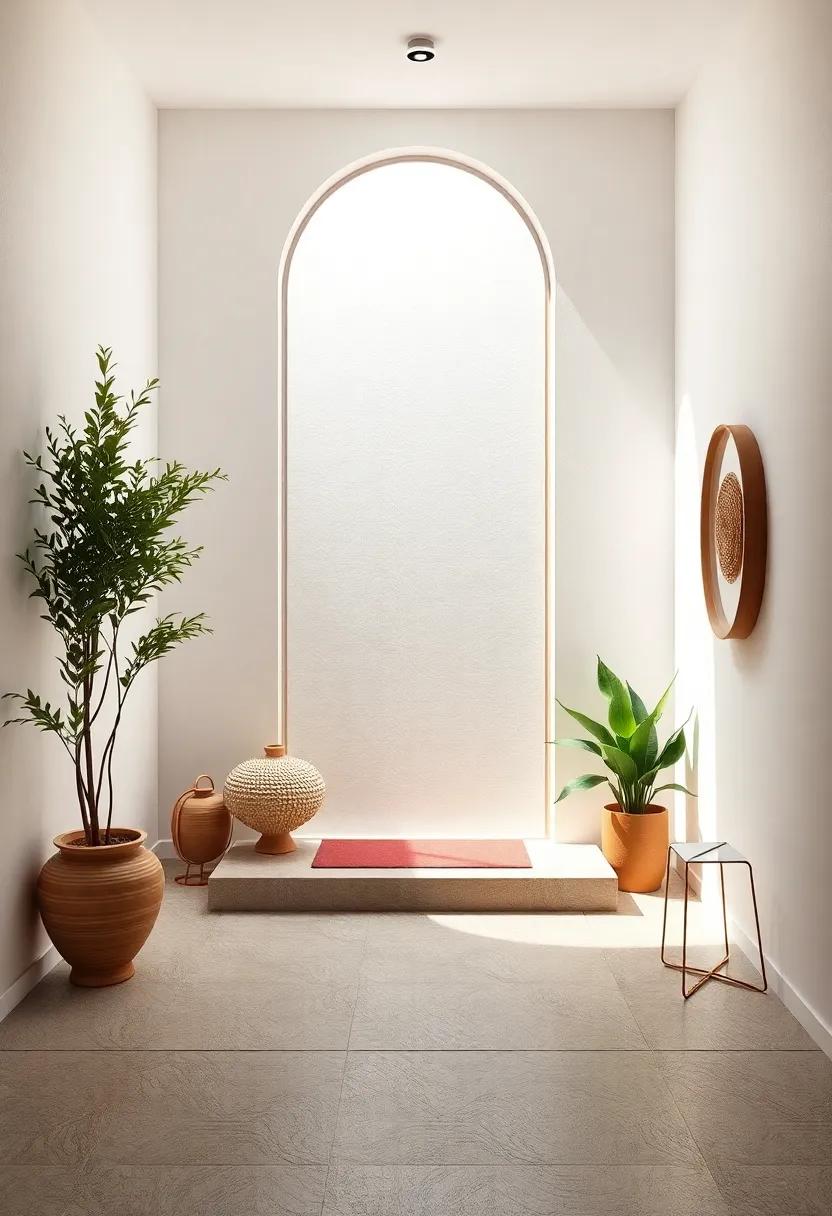
Infusing your entryway with eco-conscious art can transform it into a welcoming, vibrant space while reflecting your commitment to sustainability. Consider installing recycled material sculptures that not only capture attention but also tell a story of renewal. For example, sculptures made from reclaimed wood or metal create a striking focal point that demands admiration. Additionally, consider using living art installations, such as vertical gardens, where plants are artistically arranged on walls or hanging structures. These green elements not only beautify your entryway but also improve air quality and contribute to a calming atmosphere.
To further enhance your eco-friendly aesthetic,incorporate elements that embrace natural textures and locally sourced materials. Handmade woven wall hangings made from natural fibers can add warmth and depth, while gallery walls featuring framed prints of local landscapes or wildlife foster a connection to your surroundings.You can utilize upcycled frames to maintain your green ethos while creating a cohesive look. Below is a simple table showcasing ideas for eco-conscious art materials that resonate with sustainability:
| Material | Description |
|---|---|
| Reclaimed Wood | Unique textures and stories in every piece, perfect for sculptures or wall art. |
| Natural Fibers | Woven wall hangings that bring warmth and an organic feel. |
| Upcycled Metal | Art pieces that showcase creativity while reducing waste. |
| Living Plants | Vertical gardens that provide beauty and enhance air quality. |
Creating a Preserved Flower Arrangement as a Sustainable Decorative Element
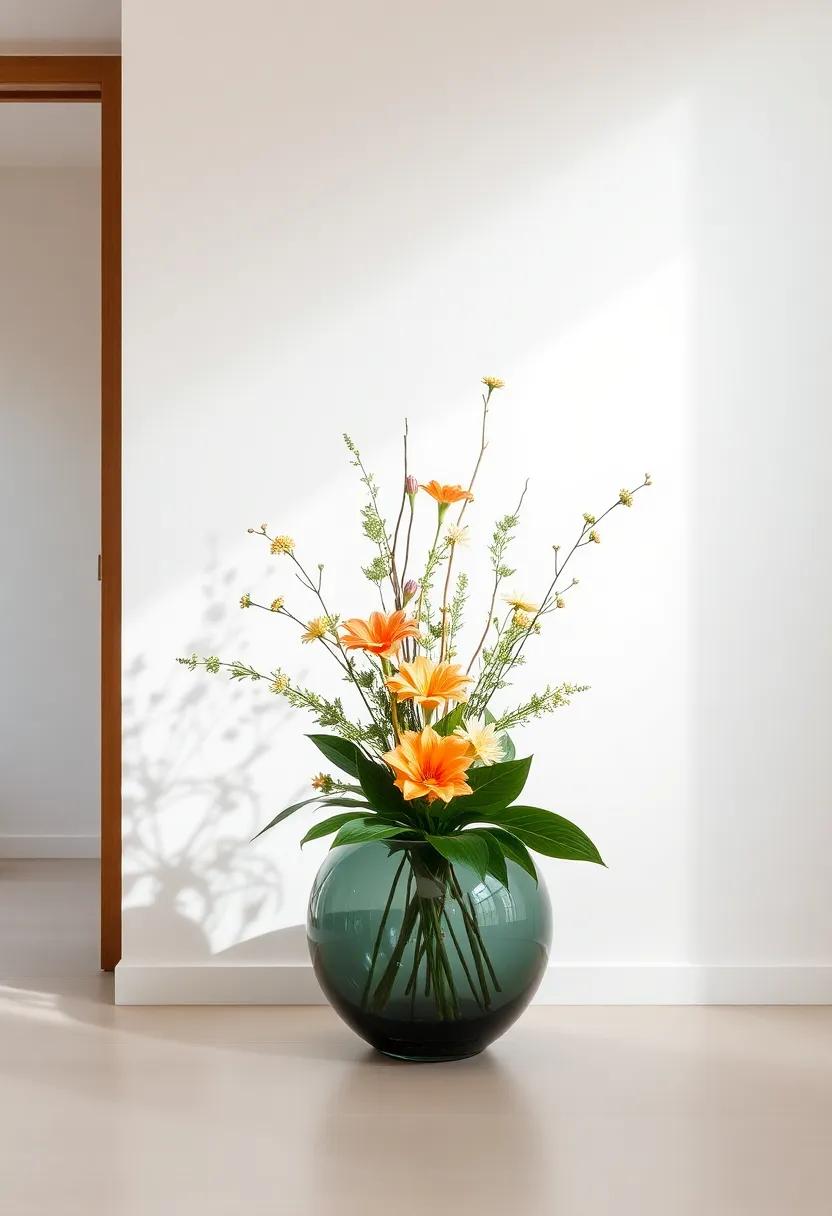
Embrace the elegance of preserved flower arrangements, where nature meets sustainability in your entryway design. These stunning floral displays offer a lasting beauty that adds a touch of sophistication without the environmental impact associated with fresh flowers. Choosing flowers like lavender, roses, or eucalyptus can infuse your space with both color and a delightful aroma, setting a warm welcome for guests. By opting for preserved blooms,you not only reduce waste but also enjoy an arrangement that is low-maintenance and resilient to seasonal changes.
To craft your own preserved flower arrangement,consider these essential steps:
- Select Your Flowers: Choose durable flowers that hold their color well after preservation.
- Choose Your Vessel: Use eco-friendly containers like glass or ceramic pots that complement your entryway.
- Arrange Thoughtfully: Layer your flowers with varying heights and textures for an eye-catching display.
- Finish with Natural Elements: Incorporate dried leaves or twigs to enhance the organic feel of your arrangement.
For those looking to elevate their decorative choices further, consider incorporating a mix of preserved and dried elements to create texture and dimension. Here’s a simple comparison of arrangements:
| Arrangement Type | Durability | Maintenance |
|---|---|---|
| Preserved Flowers | Long-lasting | Minimal |
| Dried Flowers | Very long-lasting | Occasional dusting |
| Fresh Flowers | Short-term | Frequent watering and replacement |
Incorporating a Green Welcome Mat Made from Recyclable Materials

Transform your entryway with a green welcome mat crafted from recyclable materials,a simple yet impactful way to enhance your home’s sustainability. Available in a variety of textures and colors, these mats not only offer a warm greeting but also reflect your commitment to eco-friendliness. By choosing materials like recycled rubber, hemp, or jute, you can create an inviting and stylish entryway while reducing your carbon footprint. Look for mats that showcase the following features:
- Durability: Made from resilient materials that withstand the elements.
- Biodegradability: Ensure that at the end of their life cycle, they won’t contribute to landfill waste.
- Non-toxic dyes: Free from harmful chemicals, safe for both your family and pets.
Incorporating a green welcome mat also opens the door to creative design options that reflect your personal style. Consider varying the shape and size of your mat to suit different entryway layouts, or mix and match mats with complementary decor to set a cohesive tone. You can even go a step further by choosing a mat with an inspiring message or a custom design that echoes your values.To guide your choices,take a look at the table below,which highlights popular materials and their benefits:
| Material | Benefits |
|---|---|
| Recycled Rubber | Weather-resistant and durable,perfect for high-traffic areas. |
| Hemp | Natural and biodegradable, offers a soft feel underfoot. |
| Jute | Stylish and strong, ideal for adding earthy texture to your space. |
Showcasing Sustainable Craftsmanship with Handcrafted Entryway Accessories

incorporating handcrafted entryway accessories into your home’s design not only adds a unique touch but also champions sustainable craftsmanship. Locally sourced materials and skilled artisans create pieces that are both functional and artistic. Consider items like:
- Reclaimed Wood Benches: Perfect for a statement piece, these benches tell a story while providing a place to sit and remove shoes.
- Handwoven Baskets: Ideal for storing shoes or umbrellas, they add texture and warmth to the entryway.
- Eco-friendly Doormats: Made from natural fibers,these mats are durable and reduce plastic consumption.
Each handcrafted accessory serves a dual purpose: enhancing your home’s aesthetic while supporting ethical production practices.Integrating elements such as hand-painted ceramic pots or upcycled metal wall hooks can make a striking impression. Here’s a quick comparison of popular sustainable materials used in these handcrafted items:
| Material | Benefits |
|---|---|
| Reclaimed Wood | Durable, eco-friendly, full of character |
| Bamboo | Fast-growing, sustainable, lightweight |
| Natural Fibers | Biodegradable, often handmade, adds texture |
Designing a Multi-Functional Entryway Space with Sustainable Principles
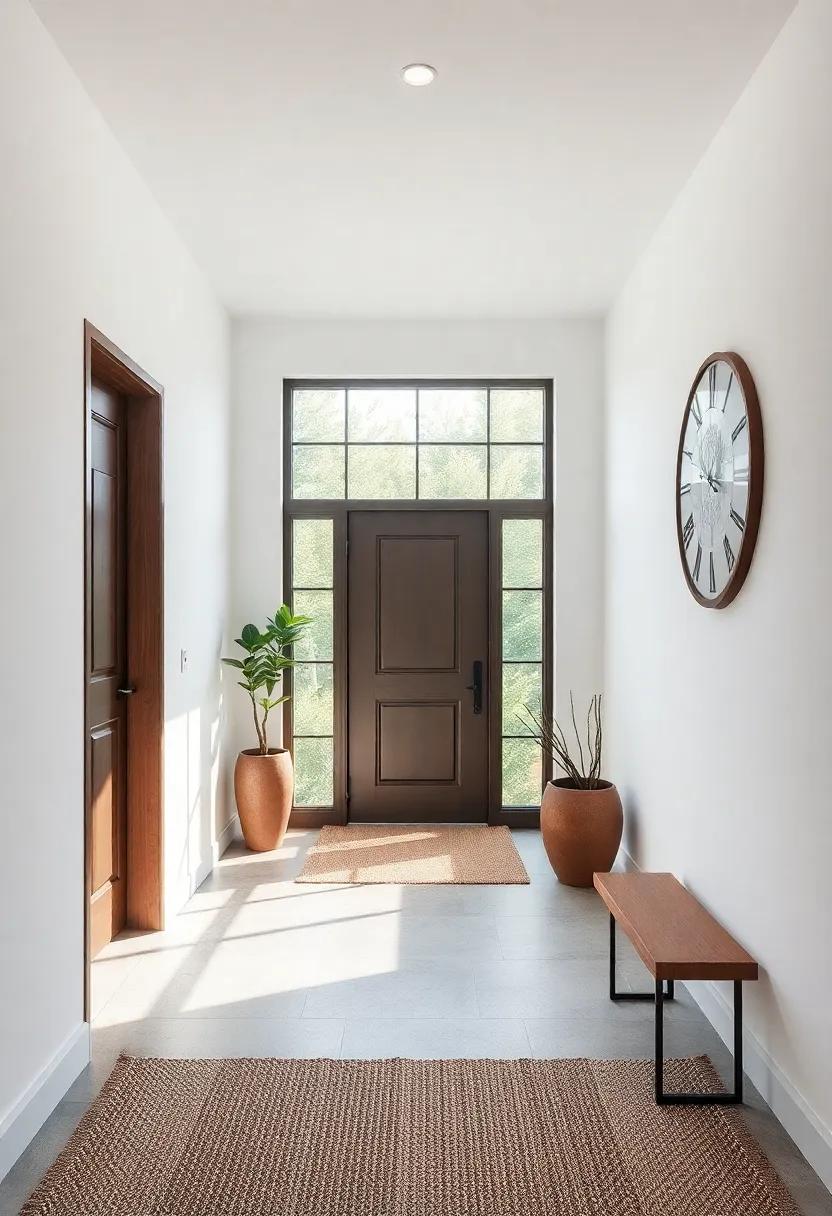
Incorporating sustainable principles into the design of an entryway can create a welcoming atmosphere while minimizing environmental impact. Choose materials that are both durable and eco-friendly, such as reclaimed wood for shelves or bamboo for flooring.Additionally, integrating natural light through energy-efficient windows or skylights reduces reliance on artificial lighting, while helping to illuminate your space beautifully. Consider also using plants—such as succulents or ferns—that can purify the air while adding a touch of greenery.
To maximize functionality, think about versatile furniture that serves multiple purposes. For instance, a wooden bench with built-in storage can provide a place to sit while also keeping shoes and bags organized. Incorporating wall hooks made from sustainable materials can offer an easy drop zone for jackets and hats, reducing clutter. Enhance the space with recyclable decor items and non-toxic finishes to keep the environment safe. Here are some essential features for a sustainable entryway design:
- energy-efficient Lighting: LED fixtures that save power.
- Natural Materials: Stone, cork, and organic textiles.
- Recycled Accessories: Decor made from repurposed items.
- Functional Greenery: Easy-care plants for air purification.
Utilizing Rainwater Harvesting in Entryway Landscaping Design

Incorporating rainwater harvesting into your entryway landscaping not only enhances the aesthetic appeal of your home but also promotes environmental sustainability. By utilizing decorative rain barrels or cisterns,you can collect and store rainwater for later use,transforming an often-overlooked element into a focal point. Consider using these features:
- Stylish Rain Barrels: Choose from various designs, from rustic wooden barrels to modern metallic ones, that complement your entryway’s style.
- Rain Chains: Install these artistic alternatives to downspouts, guiding rainwater elegantly to the ground while creating a soothing sound.
- Native Plant Gardens: Surround your rain collection system with drought-resistant plants that thrive on harvested rainwater.
To maximize the functionality of your rainwater system, integrate it seamlessly into your landscape design.Incorporating a simple irrigation system can make it even more efficient, allowing you to directly channel collected water to your plants. You can create a visually appealing layout by grouping plants with similar water needs around the collection point. this can be further enhanced by establishing a planting table that outlines your entryway plants and their water requirements:
| Plant Type | Water Requirement |
|---|---|
| Lavender | low |
| Ferns | Medium |
| Succulents | Very Low |
| Hostas | Medium |
Implementing these strategies not only conserves water but also creates a thriving ecosystem right at your doorstep, making a lasting impression on all who enter.
Anchoring Your Space with Biophilic Design Elements for a Natural Feel
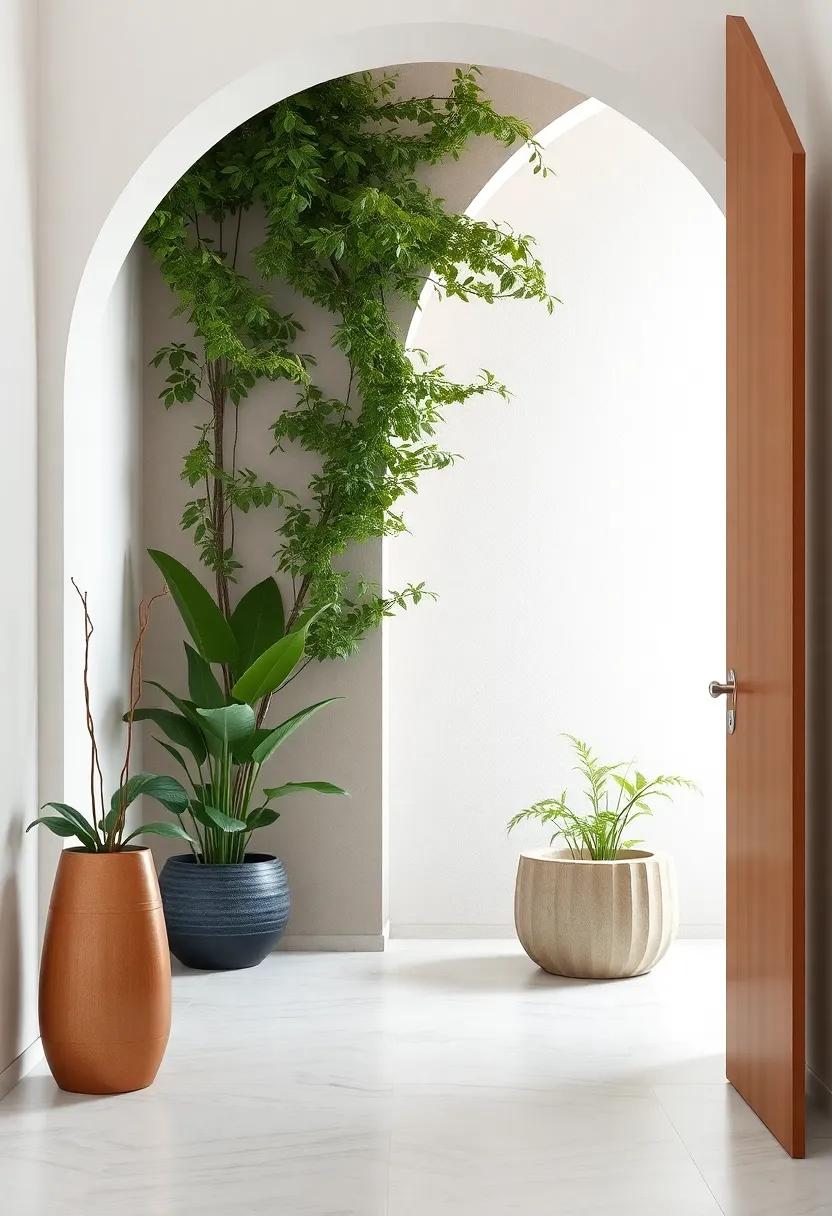
Incorporating natural elements into your entryway not only enhances the aesthetic of your space but also fosters a connection to the outdoor environment, creating an inviting atmosphere. Consider using living plants, such as ferns or succulents, which bring a burst of greenery and improve air quality. Strategically placed planters at the entrance can guide guests in, while vertical gardens or wall-mounted installations can utilize space efficiently, offering a stunning visual impact.Additionally, using natural materials like wood or stone for furniture and decorative accents can seamlessly blend the indoors with the outdoors, providing a warm and organic feel.
To further enhance the biophilic design, focus on utilizing natural light and emphasizing views of the outside. Large, unobstructed windows or glass doors not only draw in sunlight but also frame the surrounding nature, making it an integral part of your entryway. Incorporating earthy color palettes, such as muted greens, browns, and soft blues, can evoke feelings of tranquility and connection to nature. Consider these ideas to create a vibrant space that speaks of sustainability and warmth:
- Macrame plant hangers for a touch of bohemian flair.
- Bamboo shoe racks to add an eco-friendly storage option.
- Natural jute or sisal rugs to soften the entryway and provide texture.
Creating a Pathway of Reclaimed Wood for an Earthy Approach to Your Entryway
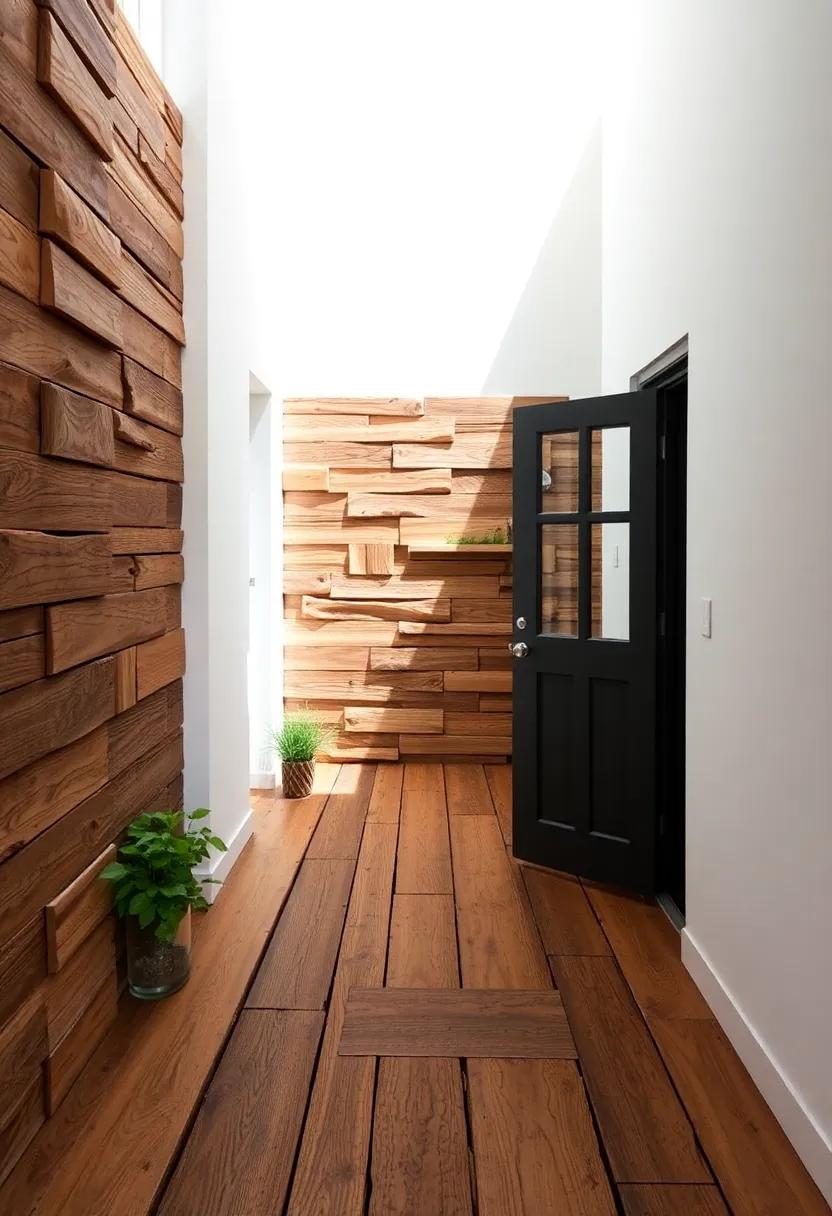
Transforming your entryway with reclaimed wood not only enhances the aesthetic appeal of your home but also contributes to a sustainable lifestyle. by sourcing locally salvaged materials, you can create a beautiful pathway that welcomes guests while honoring the environment. consider these design elements:
- Natural Textures: Embrace the unique grains and imperfections of reclaimed wood, allowing each plank to tell its own story.
- Eco-Friendly Finishes: Use organic oils or waxes to protect the wood while preserving its raw beauty.
- Varied Heights: Experiment with different thicknesses of wood slabs to create visual interest and added functionality.
To enhance the rustic charm of your entryway,pair your reclaimed wood pathway with elements that complement its earthy vibe. A blend of natural stones,greenery,and rustic furnishings can create a cohesive look. For effective planning, consider the following:
| design Element | Purpose |
|---|---|
| Planters | Add greenery and enhance air quality. |
| Outdoor Lighting | Highlight the pathway and improve safety. |
| Textured Mats | Provide a warm welcome while offering practicality. |
closing Remarks
designing a greener entryway is not just about aesthetics; it’s an invitation to embrace sustainability right at the threshold of our homes. By integrating natural materials, energy-efficient lighting, and thoughtful greenery, we can transform the entryway into a vibrant space that reflects our commitment to the environment. Each small change contributes to a larger impact, creating a welcoming atmosphere that also honors our planet. As you embark on your journey to a sustainable entryway, let imagination guide you, blending functionality with eco-friendly elegance. After all,the first step into your home can also be the first step toward a brighter,greener future.
As an Amazon Associate I earn from qualifying purchases.
